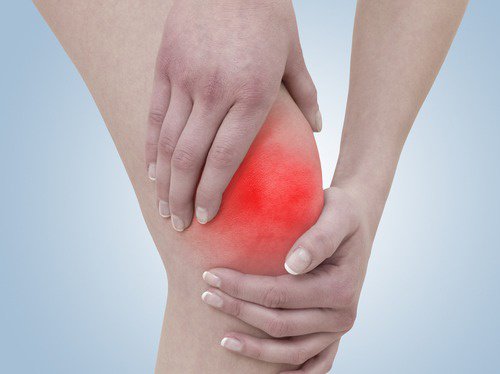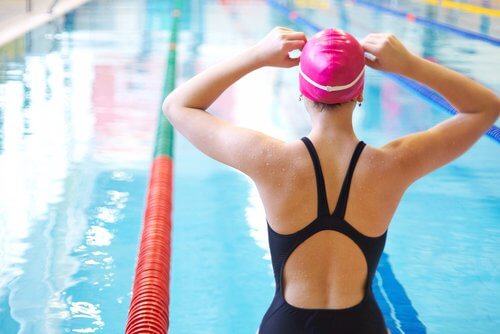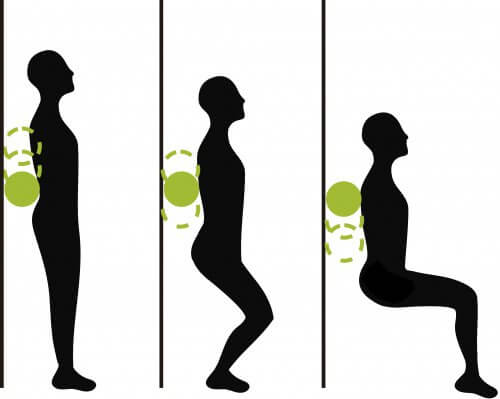Best Exercises for Knee Pain


Written and verified by psychologist Valeria Sabater
Lots of people suffer from knee pain or problems after suffering an injury or just from standard wear and tear.
It might seem like a very simple joint, but according to joint specialists, it’s actually one of the most complex.
Your knees support your entire body weight when you’re standing. They also allow you to bend and straighten your legs.
Knees are made up of a fascinating system of bone, muscle, ligament, cartilage, and fibrocartilaginous discs, but the slightest problem, injury, inflammation, or overuse can cause immediate pain, limiting your ability to carry out your daily activities.
So, what can you do? Aside from seeking medical treatment, are there any exercises that will improve the flexibility of your knees?
Can you go for a bike ride? Can you go out dancing? Will you have to take a pain killer before you do the activities you enjoy? We’ll give you all the answers to your questions in today’s article.
Physical activities for people with knee pain
Experts in sports medicine have found that knee problems are often associated with lifestyle habits, you level of physical activity, and whether you have certain disorders like arthritis or osteoporosis, as confirmed in this report from The Spanish Foundation of Rheumatology.
On the other hand, women have a greater chance of losing bone density over time, meaning that their knees and other joints tend to be more negatively affected than men.
Your knees are precision machines that are often affected by the passage of time. As such, they need to be properly cared for every day. How? Through a healthy diet and getting moderate physical exercise without straining them too much.
Also read: Why you’re having back pain
What activities are best for people who suffer from knee pain?

The elliptical machine (but careful to always keep it at a moderate level). According to that last study, sports medicine professionals say that as long as your seat is set high enough to keep the pressure off your knees, it’s fine.
Running or walking, as suggested in this study conducted by the Hospital of Navarra. In these cases, specialists indicate that if you have knee problems, the best thing to do is not overexert yourself, as you may exacerbate the pain or injury.
If you’re the kind of person who’s used to walking or jogging every day, try not to exhaust yourself, and slow down the pace a little.
Walk at a gentle pace, choosing a smooth terrain with no obstacles so you have good traction and proper alignment between your knees and hips.
Try to avoid walking around in the countryside, parks or urban areas where there are uneven sidewalks or obstacles that can affect the balance of your knees. Your safest bet is always to use a treadmill at a low speed.
Some simple exercises you can practice at home to strengthen your knees
You need to start thinking of your knees as your body’s “shock absorbers”, joints that function best with smooth and precise movements, and without sudden impacts.
Pain occurs when these shock absorbers become weak. To strengthen your knees you should practice some simple exercises at home that will keep you up and moving around.
Ready to find out what they are? Take a look!
1. Wall squats

- Place your back against the wall with an exercise ball in the small of your back.
- Put your hands behind your neck.
- Go up onto your tiptoes and hold this pose for 10 seconds. Rest and repeat five more times.
- In the same position with your back against the wall, slowly crouch down until your knees form a 90° angle. Return to the starting position and repeat five times. Simple!
2. Soft lunges
- This exercise is really simple. Stand up and extend one leg out in front of you into a lunge. Bend your knee, but always with your hip aligned with it so it’s a smooth movement that doesn’t cause you pain.
- Alternate legs and repeat this exercise five more times.
3. Ankle raises
- In sporting goods stores you can find different weights you can attach to your ankles. The aim? To tighten the knee joint and make it more flexible.
- To do this, sit in a chair and place a weight on one ankle. Raise your foot slowly. Do this for five minutes before switching to the other leg.
You should try to devote between 40 minutes to an hour to these simple exercises. They’re easy to do at home.
The most important thing is that you avoid leading a sedentary lifestyle, because this will only cause your knees to lose their flexibility and weaken the joints even more.
Are you ready to start today?
All cited sources were thoroughly reviewed by our team to ensure their quality, reliability, currency, and validity. The bibliography of this article was considered reliable and of academic or scientific accuracy.
-
Turrión Nieves, A., Martín Holguera, R., Pérez Gómez, A., & Álvarez de Mon-Soto, M. (2017). Artritis reumatoide. Medicine (Spain). https://doi.org/10.1016/j.med.2017.02.010
-
Martínez Figueroa, R., Martínez Figueroa, C., Calvo Rodriguez, R., & Figueroa Poblete, D. (2015). Osteoartritis (artrosis) de rodilla. Revista Chilena de Ortopedia y Traumatología. https://doi.org/10.1016/j.rchot.2015.10.005
-
Roberto Negrín, V., & Fernando Olavarría, M. (2014). Artrosis y ejercicio físico. Revista Médica Clínica Las Condes. https://doi.org/10.1016/S0716-8640(14)70111-7
This text is provided for informational purposes only and does not replace consultation with a professional. If in doubt, consult your specialist.








